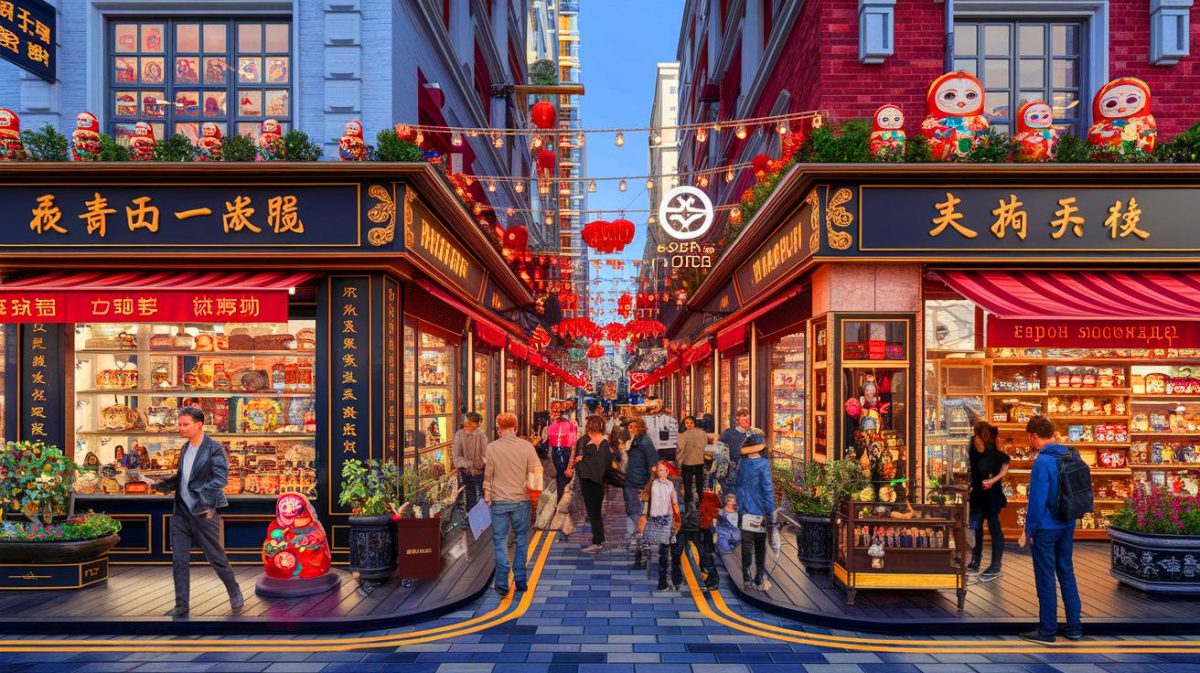| IN A NUTSHELL |
|
Over recent years, Western sanctions against Russia have reshaped the global trading landscape, notably intensifying the commercial ties between Moscow and Beijing. This geopolitical shift has led to an unexpected phenomenon: the surge of Russian-themed stores across China. As these businesses multiply, they bring a slice of Russian culture to Chinese cities, becoming a symbol of the evolving economic relationship between these two countries. Yet, beneath the surface, lies a complex interplay of authenticity, commerce, and consumer curiosity that challenges our understanding of globalization.
The Allure of Russian Exoticism
In bustling cities like Beijing, Shanghai, and Fuzhou, Russian-themed stores have become a familiar sight. These establishments captivate passersby with their distinctive Russian aesthetics: shop windows adorned with matryoshka dolls, Cyrillic inscriptions, and traditional folk music. Such attractions entice curious customers eager to explore the offerings within. The products range widely, from sausages and chocolates to durian—a fruit unfamiliar to Russia but popular in Asia—and even “vodka” presented as if from the land of the tsars.
According to the Chinese commercial registry, Qichacha, over 3,500 of these Russian-themed stores were registered by January 2025, with most emerging between 2023 and 2024. This retail boom is directly linked to the 2022 sanctions that excluded Russia from the SWIFT system, compelling it to strengthen trade with China. The surge in these stores reflects both an economic necessity and a cultural curiosity that has gripped Chinese consumers.
An Illusion of Importation
However, appearances can be deceiving. Many so-called “Russian” products in these stores are actually designed and packaged locally, often without any real connection to Russia. Some establishments have even been accused of falsifying the origins of their merchandise. In Fujian, for example, a “Russian” market was caught falsely presenting Chinese-made items as imports. Other shops have sold purportedly medicinal foods without any official authorization.
Authorities have begun to crack down on these practices. In Beijing, several stores were shut down after failing to verify the authenticity of their goods. Some businesses have preemptively rebranded themselves as “Sino-Russian mutual trade stores” to more accurately represent their offerings. This shift highlights the challenges of maintaining authenticity in a market driven by both demand for exoticism and pragmatic trade realities.
A Fleeting Trend?
While this trend is currently fueled by geopolitical dynamics, experts like Zhang Yi from iiMedia Research suggest it may merely be a passing fad. The initial excitement is largely based on the perceived rarity and exotic nature of Russian goods. However, as the market becomes saturated, this novelty could wane.
Concurrently, trade projections between the two nations are expected to stabilize around $200 billion by 2025, a decline from previous highs. Whether these shops can endure a potential normalization of trade relations between Moscow and Europe remains uncertain. This boom in Russian products in China, despite its folkloric appearance, illustrates the paradoxes of globalized trade and the collateral effects of geopolitics on local consumption.
The Paradox of Global Trade
The proliferation of Russian-themed stores in China underscores the complexities and contradictions inherent in global trade. On one hand, they represent a cultural bridge, offering a taste of Russia to curious consumers. On the other, they expose the challenges of authenticity and ethical trade practices in an interconnected world. As sanctions reshape traditional trade routes, new alliances and markets emerge, reflecting the fluid nature of international commerce.
This phenomenon also raises questions about the sustainability of such trends. As consumers become more discerning and regulatory bodies tighten oversight, the future of these stores remains uncertain. Will they adapt and evolve, or will they fade away as geopolitics shift once again?
As we consider the future of these Russian-themed stores in China, we must ask ourselves: How will the changing landscape of global trade and consumer expectations shape the next chapter in this intriguing saga?
Did you like it? 4.3/5 (24)









Wow, this is a fascinating twist in geopolitics! Who would’ve thought that China would be importing “Russian” goods from Russia that are actually made in China? 🤔
Great article! I had no idea Russian-themed stores were popping up in China. Thanks for the insight!